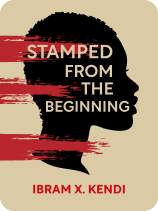

This article is an excerpt from the Shortform book guide to "Stamped from the Beginning" by Ibram X. Kendi. Shortform has the world's best summaries and analyses of books you should be reading.
Like this article? Sign up for a free trial here.
How was the concept of race invented? How did slave owners justify the institution of slavery?
In order to describe Black people as an inferior race, enslavers had to explain what a race was in the first place. This led to the idea that Black people were a cursed race, justifying it by the Biblical creation narrative.
Keep reading to learn about the invention of race, according to Ibram X. Kendi.
The Invention of Race
Ethnic and color discrimination began with the ancient Greek philosopher Aristotle, who argued that lighter and darker skin was caused by colder or warmer climates. However, Kendi says that as early modern European explorers saw more of the world and encountered new peoples, they realized that this climate theory didn’t hold up.
Instead, they posited that dark-skinned peoples were descendants of the Biblical figure Ham, one of Noah’s sons who was cursed by his father and God. Kendi explains that at this time, “race” simply meant “descent”—so by saying Black people were descended from Ham, Europeans first conceived of the idea that Black people were a distinct (and cursed) “race.”
In contrast to this lineal explanation of race, Kendi says that some other thinkers posited an alternative theory—that different races came from different acts of creation, making them essentially different biological species. This idea was technically heretical (since it contradicted the Biblical creation story), but it persisted for centuries, eventually evolving into a variety of scientific hierarchies of different human “subspecies.” These two theories—that different races result from either one act of creation or several—are known as monogenesis and polygenesis.
| The Invention of Race: Beyond the Skin Color Although modern understandings of race are inextricably linked to skin color, this wasn’t always the case. For example, some scholars argue that the ancient Greeks defined race according to factors like language and manner of dress. Others point out that “white” and “black” first appeared as quasi-racial identifiers only around 1680, when colonists of European descent in the Americas used the terms to distinguish themselves as free people in contrast to slaves of African descent. Meanwhile, experts suggest that racial colorism began with Carl Linnaeus’s division of humanity into four subspecies (which Kendi also mentions in the slightly different context of racial hierarchies). For Linnaeus, one of the defining qualities of different types of humans was their skin color—which for him carried meanings that dated back to humoral medicine, an ancient theory that proposed that the human body contains four substances: blood (red), phlegm (white), black bile, and yellow bile. Therefore, when Linnaeus characterized Asian people as “yellow” or indigenous Americans as “red,” he wasn’t just describing their skin color—he was also assigning them qualities such as greediness (associated with yellow bile) or cheerfulness (associated with blood). Over time, this color theory became increasingly associated with race to the point where we see them as one in the same—but it’s worth remembering that even this association between race and skin color is an arbitrary construct. |

———End of Preview———
Like what you just read? Read the rest of the world's best book summary and analysis of Ibram X. Kendi's "Stamped from the Beginning" at Shortform.
Here's what you'll find in our full Stamped from the Beginning summary:
- How enslavers convinced themselves that slavery benefited slaves
- Why most antiracist reformers harbored racist thoughts
- How to achieve an antiracist society






